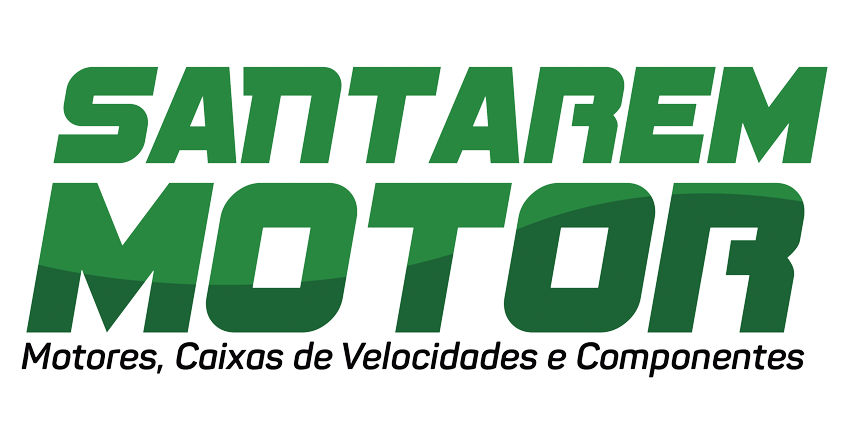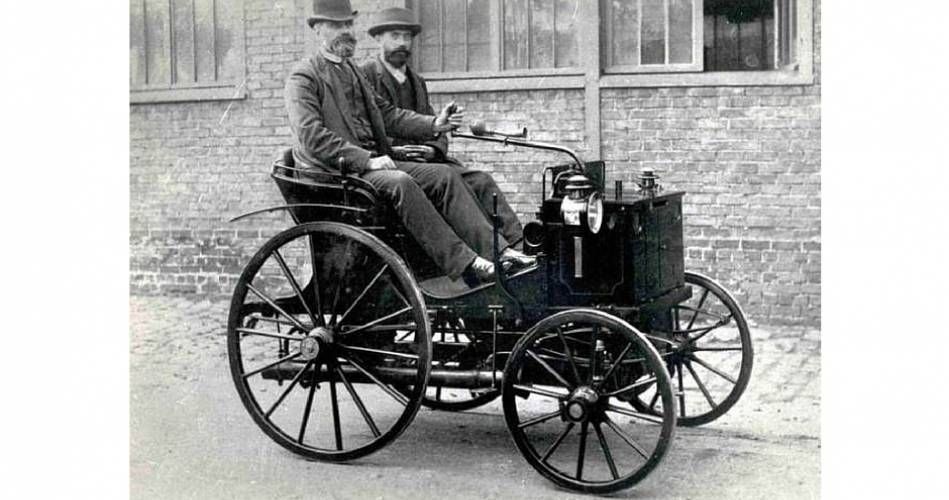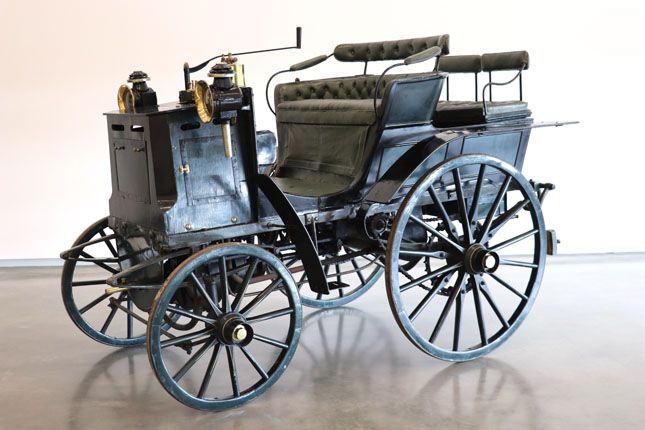
contact us
Sign up to receive our Newsletter
The story of the first car in Portugal
The first car arrived in Portugal at the end of 1895, going through several adventures and being the protagonist, on its first trip, of the first road accident. In just a few years there was a huge growth in the import of these vehicles and motor sport, from an early age, captivated both royalty and several important figures in the country.
D. Jorge de Sousa Feio was a wealthy Alentejo landowner, owner of lands in Portalegre, Beja, Ferreira, Santiago do Cacém, Messejana, Ourique, Mértola, Almodôvar and Castro Verde. His political presence was noted and on October 29, 1891, he was named 4th Count of Avilez by King D. Carlos.
With several connections and friendships in Paris, D. Jorge de Avilez began to have contact with the automobile world, having caught his attention a model of Panhard et Levassor (Peugeot), which in that year of 1895 had won the “Paris-Bordeaux” race. -Paris". In this test, the brand demonstrated its technological superiority over its competitors, as its combustion engine far outperformed its competitors' electric and steam engines.
It was then, in September 1895, that the Count of Avilez purchased his second-hand car, Panhard et Levassor, with windshield and removable roof, which arrived in Lisbon the following October. Months before this event, the first vehicle with a combustion engine had been imported into Portugal, a bicycle, an option that the count did not consider due to the agility required to drive it, which he would no longer have due to tuberculosis, a disease that would kill six people. years later.
The transport of the Panhard to Lisbon is not documented due to the lack of customs documents in the year it arrived in Portugal, however, the most accepted hypothesis is that it was carried out by ship. When the car arrived at customs in Lisbon, it was a novelty for everyone, who were filled with doubts about the classification of the goods. This problem was overcome and the cars that arrived in Portugal later already had classification and also a high customs tax.
It was on October 12, 1895 that the count's merchandise was dispatched and transported by the Count of Avilez, initially to a friend's workshop in Lisbon. This was the moment when the adventures began. The task of starting the car, which should have been simple even taking into account the characteristics of engines at the time, became quite complicated. The oil placed in the tank did not allow the vehicle to start and only after realizing that the vehicle ran on gasoline did the journey begin. According to sources at the time, the fear of the count and the engineer that the engine would explode with gasoline was so great that they had to ask a street boy to turn it over. Fortunately, the boy was fine and was able to start the machine.
From this moment on, the objective was to take the car and its occupants from Lisbon to Santiago do Cacém, known at the time as “S. Thiago”, which was no easy task. There were no bridges over the Tagus yet and the maximum speed of the Panhard et Levassor was 15 km/h, on good roads, which was not the case on roads in Portugal at that time.
On October 14, 1895, the count, his friends and the vehicle crossed the river to the bank south of Lisbon by boat, attracting the attention of everyone they passed, who were seeing a cart moving without the horses. . Arrival in Santiago do Cacém only happened 2 days later, also motivated by what can be considered the first car accident in Portugal.
It was in Palmela that the vehicle's occupants were forced to spend the night due to being run over by a donkey, which led D. Jorge de Avilez to pay compensation to its owner. The people of that village were perplexed and the matter was discussed among them for a long time.
Despite several setbacks, the count arrived in Santiago do Cacém in the early hours of October 16th and wasted no time showing his new acquisition to everyone. In the following days, he took several trips to neighboring lands and the population even found a nickname for the car, the “gasolina”.
In the remaining years of the 19th century, a few more cars were imported to Portugal, including around 4 Peugeots, some tricycles and others with steam engines.
Gradually the business, which initially lacked complicated import processes directly from the producer, began to have Portuguese companies dedicated exclusively to selling cars, even if they had no response throughout the entire sales chain, particularly after-sales.
The royal family was also a great contribution to the automobile market taking hold so quickly in Portugal. Infante D. Afonso, brother of King D. Carlos, was a car enthusiast, having bought several. His relationship with this means of transport was so great that his nickname became “Arreda”, for saying this word so many times while driving.
The first car that was purchased for the royal house was also a Panhard et Levassor, in 1898. Years later, motor sport began to take root in Portugal, with the majority of events being sponsored by the King. In 1903, the “Real Automóvel Club de Portugal”, having as one of its founders King D. Carlos I himself and after more than 100 years it still exists, losing the “Real” designation with the implementation of the republic.



João Paulo Santos Fitas, Sociedade Unipessoal, Lda.
NIPC: 508077346
960 249 442
(*National mobile call)
243 104 913
(*National landline call)
santaremmotor@jpsf.pt
Praceta Cónego Dr. Manuel Nunes Formigão, Lt. 209-Lj. B 2005-258 Santarém
List of services
-
Products Write a description for this list item and include information that will interest site visitors. For example, you may want to describe a team member's experience, what makes a product special, or a unique service that you offer.
Item Link -
Request for quote Write a description for this list item and include information that will interest site visitors. For example, you can describe a team member's experience, what makes a product special, or a unique service you offer.
Text button List Item 3 -
Who we areText button List Item 1
-
Contacts Write a description for this list item and include information that will interest site visitors. For example, you can describe a team member's experience, what makes a product special, or a unique service you offer.
Text button List Item 2
List of services
-
Privacy Policy Write a description for this list item and include information that will interest site visitors. For example, you can describe a team member's experience, what makes a product special, or a unique service you offer.
Text button List Item 1 -
Shipping Policy Write a description for this list item and include information that will interest site visitors. For example, you can describe a team member's experience, what makes a product special, or a unique service you offer.
Text button List Item 2 -
Return and Refund Policy Write a description for this list item and include information that will interest site visitors. For example, you can describe a team member's experience, what makes a product special, or a unique service you offer.
Text button List Item 3 -
Warranty Policy Write a description for this list item and include information that will interest site visitors. For example, you can describe a team member's experience, what makes a product special, or a unique service you offer.
Text button List Item 4 -
Payment methods Write a description for this list item and include information that will interest site visitors. For example, you may want to describe a team member's experience, what makes a product special, or a unique service that you offer.
Item Link -
Complaint book Write a description for this list item and include information that will interest site visitors. For example, you may want to describe a team member's experience, what makes a product special, or a unique service that you offer.
Item Link
All rights reserved | SantaremMOTOR (João Paulo Santos Fitas - Unipeesoal, Lda.)





